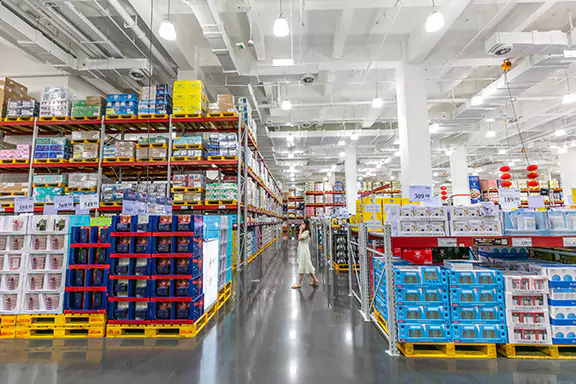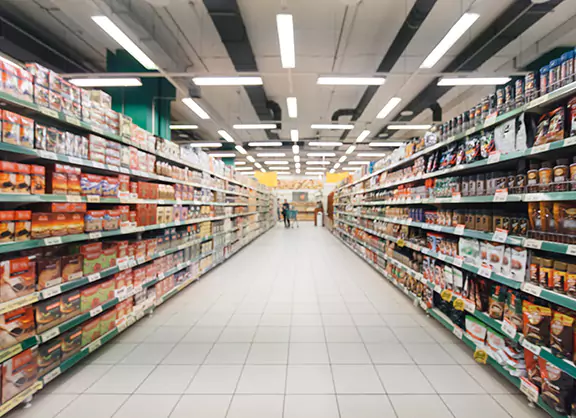Feeling the pinch of inflation at the grocery store? You’re not alone. Food prices are rising, making it harder for many families to stick to their grocery budget. However, there are practical ways to cut costs and still enjoy delicious, nutritious meals.
By making smart choices and planning ahead you’ll know how to beat inflation at the grocery store and save money on paying your grocery bill. This post will guide you through effective strategies to reduce your grocery costs, including using digital coupons, buying in bulk, and leveraging government assistance programs.
Ready to learn more? Watch the video, or keep reading!
1. Make a Plan (and Stick to It)
One of the best ways to save money at the grocery store is to plan your meals and create a detailed grocery list. Having a plan helps you stay organized, avoid impulse buys, and reduce food waste. Here’s how you can get started:
Importance of Meal Planning and Creating a Grocery List
Meal planning involves deciding in advance what you’ll eat for breakfast, lunch, dinner, and snacks throughout the week. By planning your meals, you can ensure you buy only what you need, which helps prevent overspending and food waste. Creating a grocery list based on your meal plan helps you stay focused when you shop, making it easier to resist the temptation of unplanned purchases.
Tips for Effective Meal Planning and Sticking to the List
Start Simple
Check Your Inventory
Write It Down
Stick to Your List
Be Flexible with Alternatives
By making a plan and sticking to it, you can significantly reduce your grocery bill and keep more money in your pocket.
2. Check for Coupons and Discounts
Using coupons and discounts is a simple yet effective way to save money on groceries. Many stores offer weekly deals and coupons that can help you cut costs on your grocery bill. Here’s how you can make the most of these savings opportunities.
Using Store Apps and Websites to Find Coupons and Weekly Deals
Most major grocery stores have apps or websites where you can find weekly deals and digital coupons. Before heading to the store, check your store’s apps to see which items are on sale and if any coupons match the items on your grocery list. This can help you adjust your meal plan to include more discounted items, saving you even more money.
Personalized Coupons Based on Frequent Purchases
Some stores offer personalized coupons based on your buying habits. For example, if you frequently buy a particular brand of cereal, the store might offer you a better deal with a coupon for that brand.
Also sign up for store loyalty programs, as they often provide personalized coupons and additional discounts.
Swap Items to Save on Your Grocery Bill
Swapping certain items for more cost-effective alternatives is a smart way of saving money to manage your grocery budget. Here are some tips on how you can make simple swaps to save money without compromising on quality.
Buying Whole Foods Instead of Pre-Processed Items
Whole foods are often cheaper than their pre-processed counterparts. For example, buying a block of cheese and shredding it yourself is usually less expensive than buying pre-shredded cheese. Similarly, whole fruits and vegetables tend to be cheaper than pre-cut ones. By spending a little extra time preparing your own food, you can save a significant amount of money.
Choosing Generic Brands Over Name Brands
Generic or store brands are typically less expensive than name brands, and the quality is often just as good. For instance, a name-brand whole wheat bread might cost $4.79, while the store brand costs only $2.99.
Most stores carry generic brands for a wide range of products, including cereals, canned goods, and cleaning supplies. Opting for these can help you stretch your grocery budget further.
Opting for In-Season, Frozen, or Canned Produce
Produce that is in season is usually cheaper and fresher. The USDA provides lists of in-season produce to help you make informed choices. When fresh produce isn’t available or affordable, consider buying frozen or canned options. Frozen fruits and vegetables are often picked and packaged at their peak quality, making them a nutritious and budget-friendly choice. Canned goods like corn, beans, and pineapple are also great alternatives when fresh produce is out of your budget.

4. Buy in Bulk
Buying in bulk is a great way to save money on groceries, especially for pantry staples and non-perishable items. By purchasing larger quantities, you can lower the cost per unit and reduce the frequency of your shopping trips. Here’s how you can make the most of bulk buying.
Benefits of Buying Pantry Staples and Non-Perishables in Bulk
When you buy in bulk, you often pay less per unit compared to smaller packages. For example, buying a large bag of rice or a bulk pack of canned beans can be much cheaper than purchasing smaller quantities more frequently. Bulk buying is particularly beneficial for items that have a long shelf life, such as pasta, oatmeal, flour, and dried beans.
How Bulk Buying Reduces Cost Per Unit
The cost per unit is usually lower when you buy in bulk because you’re purchasing larger quantities at a discounted rate. For example, a 5-pound bag of flour might cost $3, while a 25-pound bag might cost $10. While the larger bag costs more upfront, the cost per pound is significantly lower.
5. Utilize Government Assistance Programs
Government assistance programs such as SNAP, WIC, and TANF can provide vital support for low-income families, helping them afford healthy and nutritious food. These programs are designed to alleviate financial stress and ensure that everyone has access to essential groceries.
Overview of SNAP, WIC, and TANF Programs
SNAP (Supplemental Nutrition Assistance Program)
SNAP, commonly known as food stamps, helps low-income individuals and families purchase food. Benefits are provided through an Electronic Benefit Transfer (EBT) card, which works like a debit card at grocery stores. SNAP can be used to buy a wide variety of foods, including fruits, vegetables, meat, dairy, and bread.
WIC (Women, Infants, and Children)
WIC provides nutritional support to pregnant women, new mothers, and young children. The program offers vouchers for specific healthy foods such as milk, cheese, eggs, fruits, and vegetables.
TANF (Temporary Assistance for Needy Families)
TANF provides financial assistance to low-income families with children. This program helps cover basic needs such as food, clothing, and housing. TANF benefits can be used in conjunction with SNAP and WIC to provide comprehensive support for families in need.
6. Save Money with FREE Cell Phone Service from EASY Wireless
Staying connected is essential for managing your grocery shopping effectively, especially if you rely on government assistance programs like SNAP or WIC.
EASY Wireless offers FREE cell phone service with Talk, Text, and Data for those who qualify through the Lifeline program, providing you with the tools you need to make smart shopping decisions.
Click to see if you’re eligible for FREE Cell Phone Service from EASY Wireless.
Get the Benefits of Staying Connected when Grocery Shopping
With EASY Wireless, you can easily track your SNAP account balances, access mobile apps and digital coupons and search for the best deals using your smartphone. This helps you stay on budget and avoid running out of funds before the end of the month.
Start Smart Shopping Now and Beat Inflation
Inflation can make grocery shopping challenging, but with the right strategies, you can beat rising prices and stay within your budget. By planning your meals, checking for coupons and discounts, swapping items to save, buying in bulk, government assistance, and using digital tools, you can significantly reduce your grocery bill.


